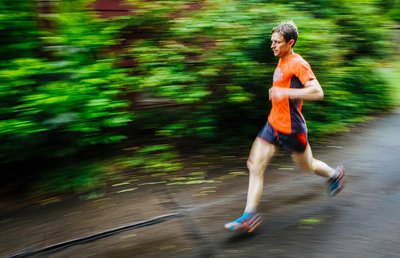
Ultramarathon runners push themselves hard, running up to 100 miles at a time and ascending thousands of feet. A deep passion for what they do and strong commitment to running turns a hobby into a lifestyle, and Eugene is home to some of the highest-placing ultramarathon contestants.
Approximately 20 times a year, long-distance runners come to the Oregon wilderness to compete in ultramarathons — races longer than the average 26.2-mile marathon and spanning up to 100 miles. Ultramarathons are run on trails, which often include vertical ascent.
Mount Pisgah already had its annual Frozen Trail run in February, which included a 50k, but there are more mega-long distance races to come, including the Mount Hood Pacific Crest Trail Ultramarathon, a 50-mile race with 5,630 feet in elevation gained. It starts at the Clackamas Ranger Station at 6:30 am July 1. Later in the summer and closer to Eugene is the Where’s Waldo 100k Ultra Aug. 16 at Willamette Pass.
“You get to see things that you could see hiking,” says Joe Uhan, ultramarathon runner and doctor of physical therapy, “but it might take you three days to hike.”
Uhan, 36, runs almost every day to stay in shape for ultramarathons. A typical Saturday run entails covering 17 miles and climbing 5,000 feet in elevation in just three hours.
“I don’t necessarily think it’s all that healthy,” Uhan says. “I think the healthiest thing about ultrarunning is being passionate about something and having the community element.”
In the 17 ultramarathons he has completed, Uhan has placed among the top three finishers seven times. And of the 20 he’s attempted, Uhan has left only three unfinished. He says sometimes it’s best to listen to his body and not finish the run.
“I had one where I was cramping really bad and my legs just kind of stopped working,” Uhan says.
Dan Olmstead has been running ultramarathons since 2007 and has placed first in 12 of the 32 races he’s completed. He and Uhan both say running on trails has been better for them than training for marathons because the terrain is softer and it requires more lateral and up-and-down movement. Olmstead says common injuries are similar to those in marathon running and include ilitobial band syndrome, which affects the area from the knee to the hip, and runner’s knee.
Olmstead has finished three 100-mile races. He says his right leg was swollen from his knee to his ankle for three weeks after his last 100-mile race in September, when he placed second. He also injured his Achilles tendon last year.
Olmstead started running track at 11 years old and completed in his first marathon when he was 18. At 42, he says it’s hard to imagine running not being a part of his life.
“I think I maybe have given up on the idea that I’ll be able to quit,” he says. “If my body doesn’t let me, maybe someday I’ll have to quit. But in a weird way it can be an addiction, like a lot of sports.”
Forty-eight-year-old Laura McClain, founder of Run Momma Run, a local group that organizes running events for women, has completed four ultramarathons. She says she thinks runner’s high is a real physiological response.
“It’s a very physical thing,” McClain says. “Endorphins are a fantastic drug.”
She says she loves the challenges that ultramarathons bring, not only of running long distances but dealing with the elements and being aware of her surroundings.
“Some of my deepest moments of happiness have come from being in the woods after a long-distance run,” McClain says. “I would say that’s kind of a religious experience.”